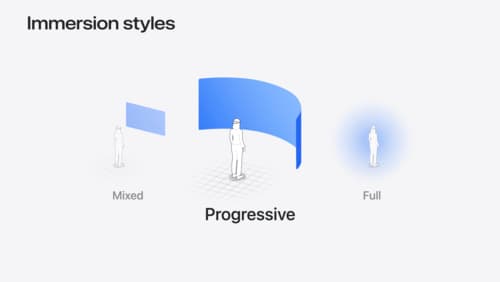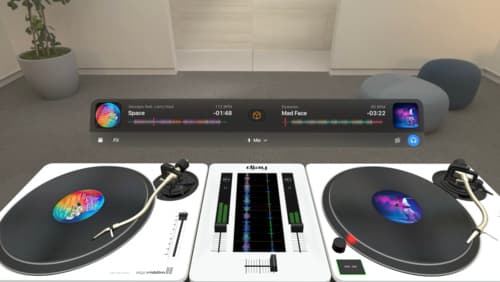how to build a vision OS app that that can recognize all the tables and walls in the room?
Asked on 2024-08-02
1 search
To build a visionOS app that can recognize all the tables and walls in the room, you can leverage the enhanced scene understanding capabilities in visionOS. Here are the key points and sessions that will help you get started:
-
Scene Understanding Capabilities:
- VisionOS has significantly extended the fidelity of its scene understanding capabilities. Planes can now be detected in all orientations, allowing you to anchor objects on surfaces in your surroundings. This includes detecting tables and walls.
- The concept of room anchors has been introduced, which considers the user's surroundings on a per-room basis. This can help in recognizing and interacting with different rooms and their contents.
- A new object tracking API allows you to attach content to individual objects found around the user, which can be useful for recognizing and interacting with tables and other objects.
You can find more details in the Platforms State of the Union session.
-
Using ARKit and RealityKit:
- ARKit is a core framework for AR experiences across platforms and powers spatial experiences with a deeper interaction and understanding of the world around the user. This can be particularly useful for recognizing and interacting with tables and walls.
- RealityKit can be used to create realistic and interactive 3D content that can be anchored to detected planes and objects.
More information on these frameworks can be found in the Platforms State of the Union session.
-
Object Tracking:
- The "Explore object tracking for visionOS" session provides insights into how you can use object tracking to recognize and interact with objects in the room. This includes creating reference objects and anchoring virtual content to them.
You can explore this in the Explore object tracking for visionOS session.
Relevant Sessions:
By leveraging these capabilities and frameworks, you can build a visionOS app that effectively recognizes and interacts with tables, walls, and other objects in the room.

Explore object tracking for visionOS
Find out how you can use object tracking to turn real-world objects into virtual anchors in your visionOS app. Learn how you can build spatial experiences with object tracking from start to finish. Find out how to create a reference object using machine learning in Create ML and attach content relative to your target object in Reality Composer Pro, RealityKit or ARKit APIs.

Dive deep into volumes and immersive spaces
Discover powerful new ways to customize volumes and immersive spaces in visionOS. Learn to fine-tune how volumes resize and respond to people moving around them. Make volumes and immersive spaces interact through the power of coordinate conversions. Find out how to make your app react when people adjust immersion with the Digital Crown, and use a surrounding effect to dynamically customize the passthrough tint in your immersive space experience.

Design great visionOS apps
Find out how to create compelling spatial computing apps by embracing immersion, designing for eyes and hands, and taking advantage of depth, scale, and space. We’ll share several examples of great visionOS apps and explore how their designers approached creating new experiences for the platform.
